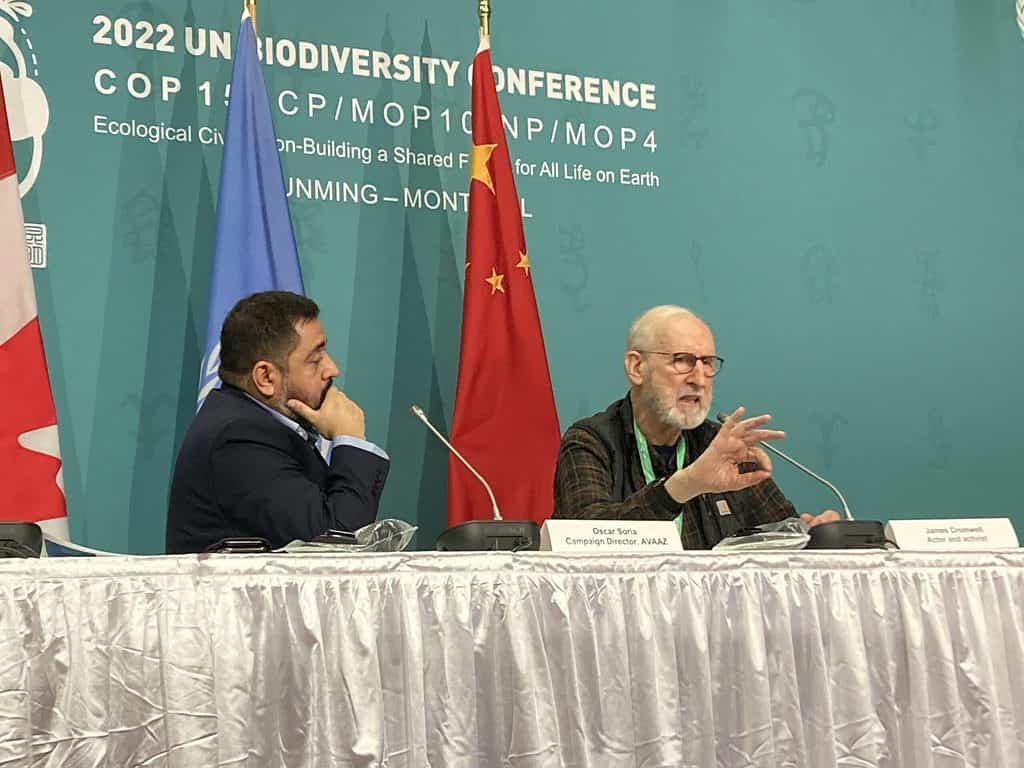A group of award-winning artists has endorsed a global petition, already signed by over 3.2 million people, calling to protect half the planet and make it a safe space for biodiversity. Among the group of signatories are William Shatner, Olivia Colman, Sophie Turner, Jack Black, Joaquin Phoenix, Andie MacDowell, Frances Fisher, and James Cromwell.
The decision comes amid a stalemate in the negotiations involving the world’s governments; negotiations started last week in Montreal over a new global treaty to protect the natural world, but officials don’t seem to agree on the road ahead. The group of artists joined a group of researchers that signed another letter urging for more action on the biodiversity front, urging that the negotiations don’t sink into oblivion.

“Human activities have been driving the proliferation of threats such as climate change, habitat loss, pollution, over-exploitation and epidemics,” James Comwell, actor and activist, said in Montreal. “As a result of our own actions, the accelerated biodiversity loss is not only causing species to become extinct faster than at any time.”
Cromwell, known for his role in Babe, Star Trek, Jurassic World, and many movies, spoke at a press conference at the United Nations biodiversity summit, also known as COP15. He said governments and corporations are driving the world to a sixth mass extinction and asked everyone to change their mindsets so as to be more connected with nature.
He’s not far off with this assessment as many researchers believe we’re going through a mass extinction caused by human activity. He’s also far from the only one calling for swifter action.
In an op-ed earlier this week, William Shatner said his trip to space made him realize that we have only one Earth, which must live long and prosper. “During my lifetime, this world has changed faster than for any generation before us. We are now at an ecological tipping point, said Shatner, asking bold leadership to avoid a further crisis.
“My generation is leaving them a planet that might pretty soon be barely livable for many of Earth’s inhabitants. My experience in space filled me with sadness, but also with a strong resolve. I don’t want my grandchildren to simply survive. I want them, as an old friend used to say, to be able to live long and prosper,” Shatner wrote.
Meanwhile, actress Olivia Colman warned leaders that “the world will be watching,” and Sophie Turner said, “we must commit to protecting at least 50% of our planet by 2030”. Jack Black cautioned that “life is being extinguished as fast as when the dinosaurs disappeared” and Mark Ruffalo released a Twitter stream at the start of COP15.
Nothing moves until finance moves
As it so often happens, the problem is money.
We are now at the halfway stage of the biodiversity summit in Montreal and government representatives and civil society are already warning over a potential collapse of the negotiations. There are strong differences between developed and developing countries on the way forward, mainly linked to how nature protection will be funded.
Echoing the discussions from last month’s climate summit, where developed countries agreed to create a fund to compensate loss and damage from climate change in vulnerable nations, developing countries are calling for more aid from developed nations. But other countries feel that countries like China, whose economies have grown greatly in the past few decades, should do more.
Without money, the deal is likely to become a weak one but countries don’t seem to agree on where the money should come from. Still. not all hope is lost yet, and there is, at least in theory, still a chance of a strong agreement.
The agreement being negotiated includes over 20 targets, with one making the headlines more than others – protecting 30% of the planet by 2030. However, civil society and the artists behind the letter are claiming that’s not enough. Instead, the goal should be 50% by 2030 so to avoid further destruction of the natural world.
Innocent Maloba, a campaigner at WWF, said all countries have to dramatically increase ambition for a deal to be achieved. Donor countries don’t seem to be ready to step up on biodiversity finance, Maloba said, despite some initial commitments at the start of the summit – such as Prime Minister Trudeau announcing a US$350 million pledge.
“Developed countries have a duty to support developing countries in the protection and conservation of the biodiversity that we all rely on. It is in their own self-interest. This is about safeguarding the natural world, and supporting the communities on the front line of the nature crisis. At its heart, this isn’t only about numbers,” Maloba said in a press conference.
The way things are going, even a deal for 30% of the planet would be good. It’s not at all impossible that discussions just break down with no deal.






